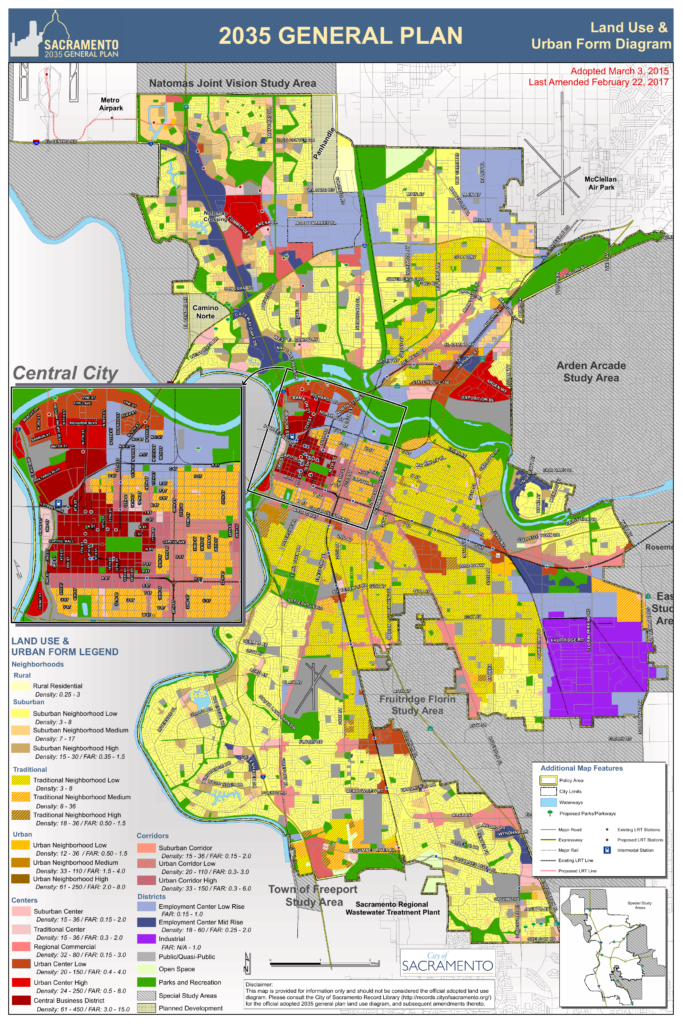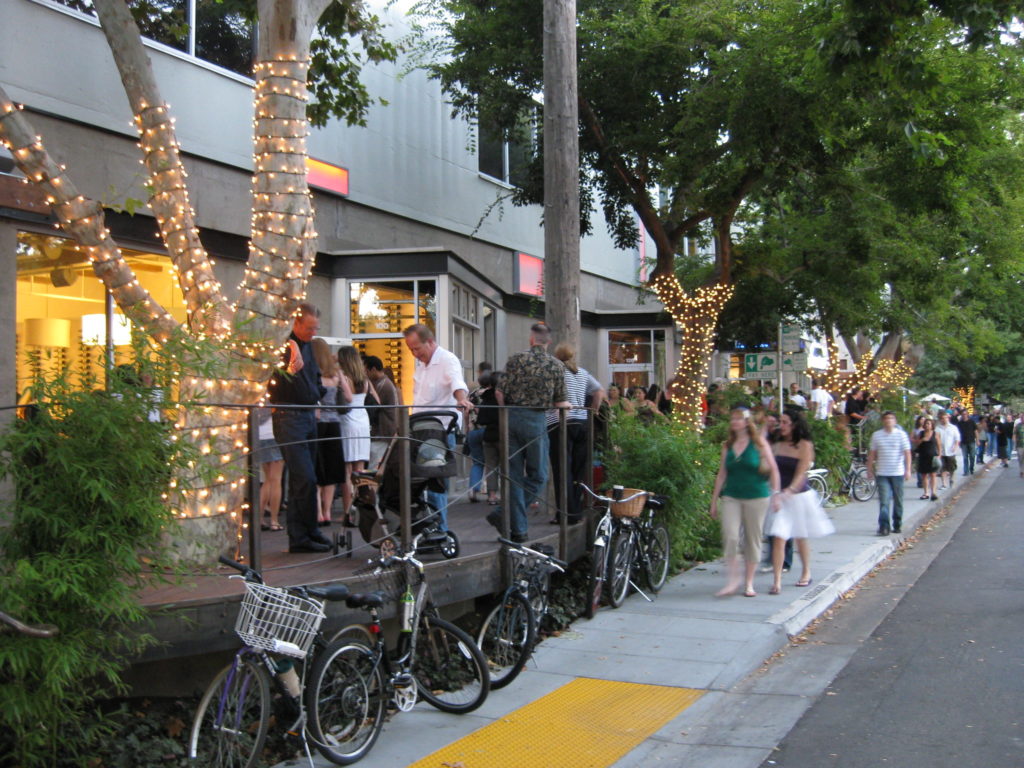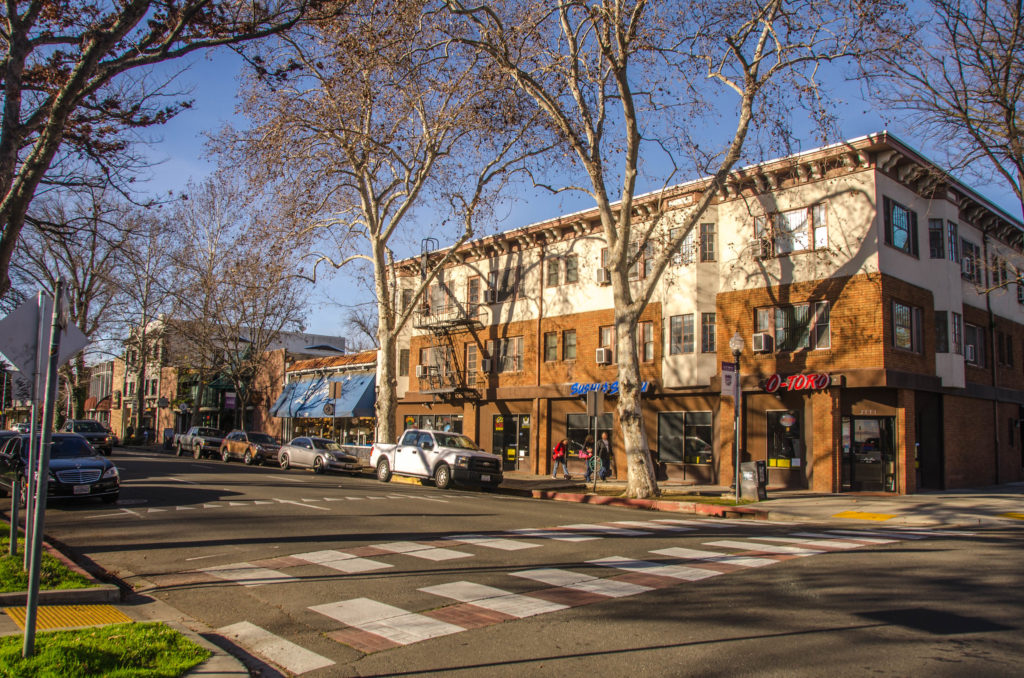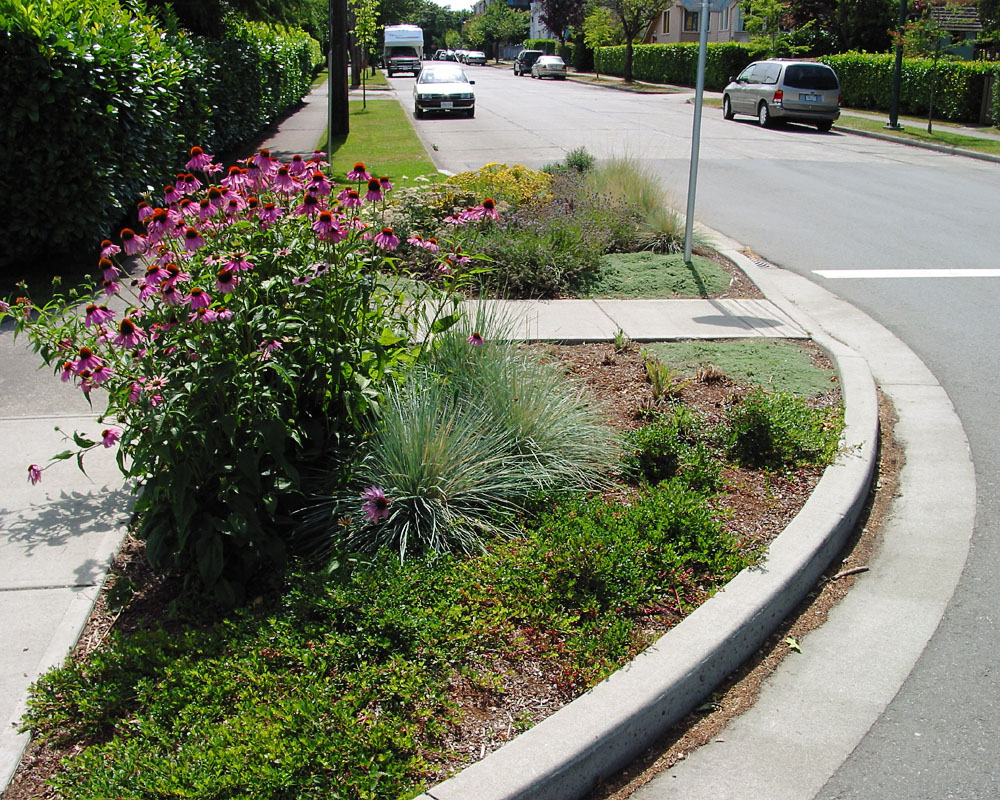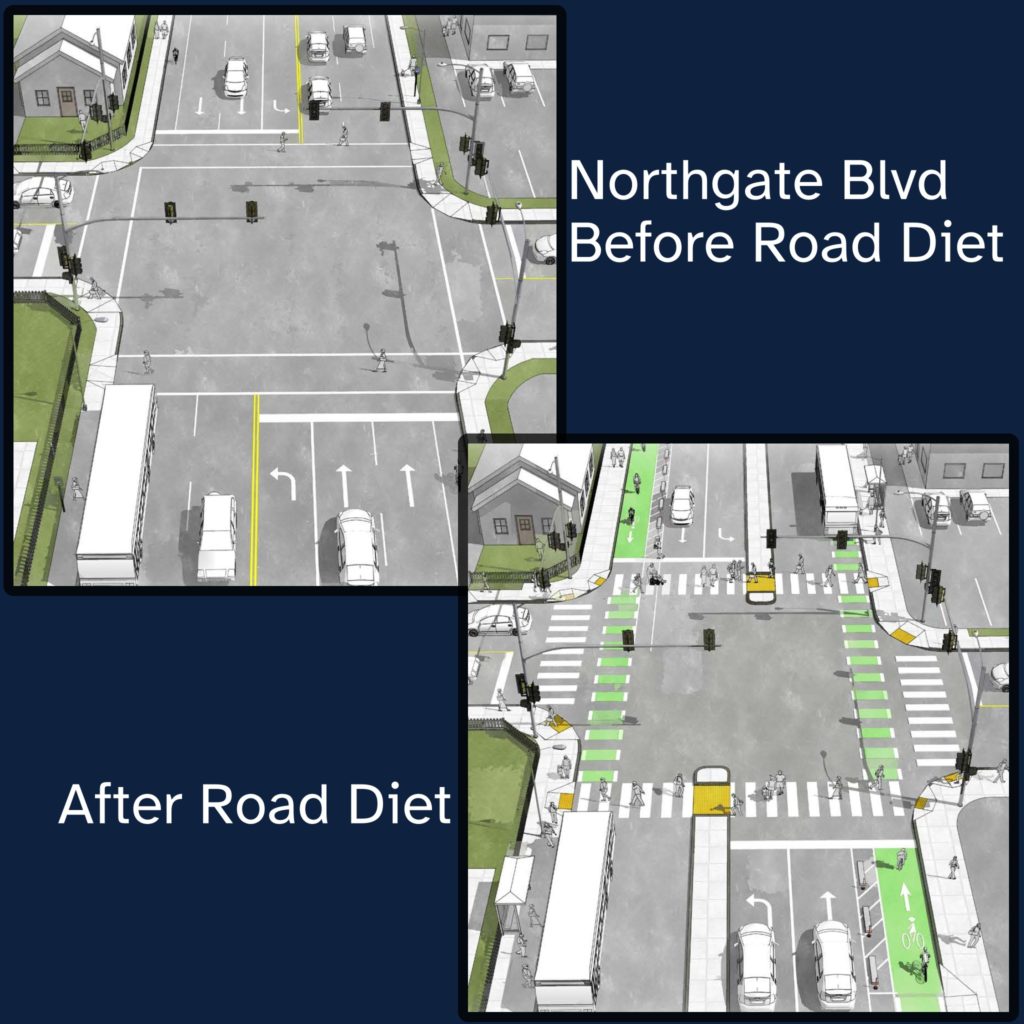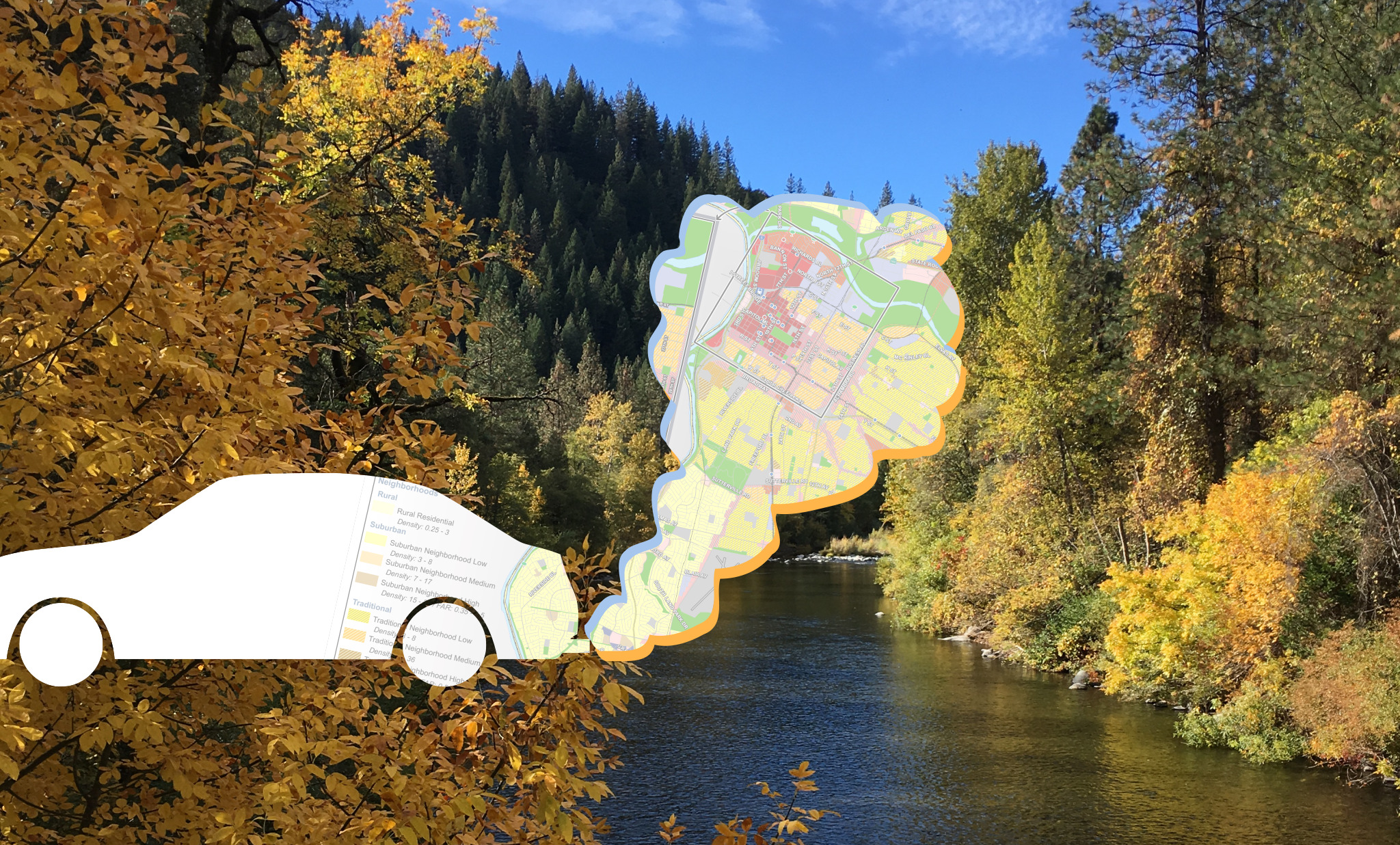
CC-BY Pacific Southwest Forest Service, USDA
Exclusionary zoning dominates the Sacramento General Plan (image center).
Global warming, habitat destruction, and more extreme weather events are already under way, and Sacramento is not immune. Within the span of 9 months in 2022-2023, Sacramento experienced the hottest summer on record, and the 11th wettest winter on record. This trend of extreme change extends past just weather events. For instance, the California central valley is home to tens of thousands of plant and insect species that play a critical role in the stability of the local ecosystem, but our collective inaction is causing what is morbidly described as The Insect Apocalypse, the loss of 10% of terrestrial insects per decade. The collapse of insect biodiversity is simply not an option for humanity, let alone Sacramento, as it would have dire consequences for food and farming.
As residents and community members, we are not limited to passively experiencing large-scale climate and ecosystem devastation—together we can play an important role at the local level and meaningfully shift the equation towards a stronger, more sustainable region. National and international policy can help to reduce net carbon emissions, but cities and residents control some of the most influential levers related to the climate and natural habitat.
Climate Impact of the Suburban Experiment

The suburban experiment is the nation’s largest, most expensive, and most ecologically devastating project ever undertaken.
Suburbanism and its supporting infrastructure divides communities, enables large-scale urban sprawl, bankrupts our cities, and diverts government spending. If the inefficiency and fiscal irresponsibility of suburbs wasn’t bad enough, this failed experiment may also be the single most significant cause of today’s climate crisis. Let’s evaluate three key decisions that Sacramento and other cities make on a regular basis to perpetuate the suburban experiment:
- Poor Decision 1: Short-term accounting
- Sacramento’s municipal debt is already $726.6 million, yet it continues to build car-oriented infrastructure without considering how the long-term maintenance liabilities of those projects will fuel the municipal debt and burden taxpayers down the road. This has resulted in an infrastructure financing pattern known as the Growth Ponzi Scheme which is the perpetual cycle of creating new sprawling low-density car-oriented developments to help balance municipal debt caused by the last sprawl cycle. Suburbs and other large car-oriented investments are effectively perpetual debt and urban sprawl generators if left unchecked.
- Poor Decision 2: Exclusionary zoning
- Many cities may also decide to impose exclusionary zoning, which mandates the exclusion of certain types of land uses from a given community, such as small shops and low-rise apartments. These zoning restrictions have their foundations rooted in bigotry as they were originally designed to limit racial and economic diversity within suburbs, but they have also enabled sprawl by explicitly encouraging low-density housing and by geographically segregating different types of land uses. Furthermore they stunt neighborhood growth and disadvantage small businesses by arbitrarily limiting where they can legally build. Today, Sacramento’s land mass comprises at least 80% exclusionary zoning (designated “R1”), most of which only allows low-density detached homes, and few exceptions for non-residential land uses, such as schools and golf courses.
- Poor Decision 3: Minimum parking requirements
- Finally, a city that imposes minimum parking requirements forces everybody to share the cost of wasting valuable land. It directly enables sprawl by physically weaving parking between traditionally productive land uses. Parking is too often over-allocated; there are an estimated 3 to 8 parking spots per car in America, and between 15-20% of all land on the grid in Sacramento is dedicated exclusively to parking cars (based on OpenStreetMap data). Furthermore, parking abundance is a significant factor in travel mode decisions which leads to more driving (and carbon emissions), a phenomenon known as induced demand.
Sprawl is a common outcome of all three city decisions, and it enables global warming in a number of ways:
- Sprawl is a significant reason why local destinations are too far to walk. When sprawl is combined with segregated land uses, this results in a condition known as car-dependency. The transportation sector alone is responsible for 57% of Sacramento’s greenhouse gas emissions, and cars dominate that sector.
- Sprawl requires the use of more construction materials per-capita, especially cement. Cement production alone is a major carbon emissions source, responsible for 4-8% of the world’s CO2.
- Sprawl necessarily destroys natural habitat in the process of construction. At the scale of suburban development and the speed of the Growth Ponzi Scheme, the rate of land consumed by sprawl is absolutely devastating. America loses a sobering 1.5 million acres per year of natural habitat to development – 80% of which is suburban development. Put into perspective, that’s equivalent to losing a football field of natural habitat every 30 seconds, most of which becomes low-density suburb or its supporting infrastructure (freeways, stroads, parking, etc.).
Our natural habitat is the only system working to correct our mistakes.
Natural habitats are highly efficient natural carbon sinks that function at the scale that’s needed to remedy the climate crisis. Decisions that cause sprawl not only drive up carbon emissions, but also actively destroy our only effective carbon sink. Double kill. Furthermore, as natural habitats shrink, plant and insect biodiversity shrinks in tandem, typically resulting in extinction events and biomass losses that destabilize and diminish whatever carbon sinks remain. Triple kill.
Frankly, these three city decisions are extremely poor ones that drive a nail in the “stable climate” coffin.
The suburban experiment and the decisions cities make to perpetuate it generates catastrophe on a global scale. Currently, these poor policies and decisions are enabled at every level of government.
How Can Strong Towns Help?
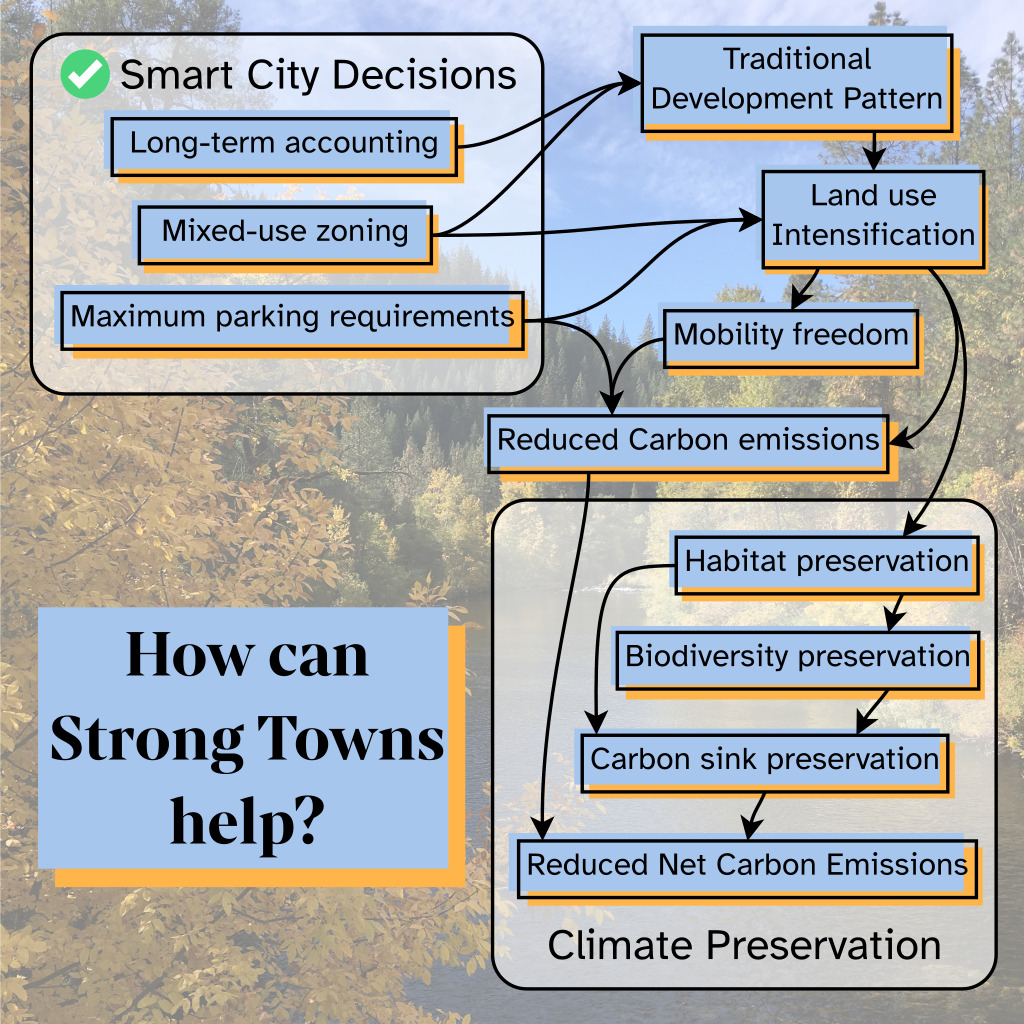
Step 1: Stop the Bleeding
The good news is that the first incremental steps towards a solution are cheap and only require process tweaks and some paperwork: End new suburban expansion. First, Sacramento could stop issuing bonds, accepting external grants, or raising taxes to fund the development of new city highways or other car-oriented mega infrastructure that do not pencil out fiscally in the long-term anyway. Second, lift zoning restrictions that currently make it illegal to build corner stores and other locally-serving businesses in most of Sacramento’s residential neighborhoods (i.e. allow mixed-use development). Third, eliminate parking minimums everywhere in Sacramento, not just within a stone’s throw of a transit station. I repeat—we can do all of these today with the resources we currently have. To be clear, this first step would not be a ban on suburbia; it is merely an attempt to roll-back the tools and regulations which cause planners to follow suburban development patterns.
As we begin to roll back the top-down regulations that imposed the suburban experiment onto our communities, expect to see a resurgence of more traditional development patterns, which are more walkable, dynamic, and have the density to support healthy communities. Mixing uses and reducing parking will help reduce distances between home, work, and other destinations, making the city less car-dependent. Over time, expect to feel a better sense of place nearer to where you live, work and play. Expect your walks to be safer, more social, more comfortable, and more productive. For the 27% of Americans that don’t hold a driver’s license, and 66% of drivers that do not enjoy driving a lot, these urban transformations open up additional transportation options and provide more mobility freedom. Children will regain some of the independence they once had, and life as an elderly person won’t be severely disrupted by a failed eye exam at the DMV. When we reduce our dependence on cars, we also avoid the cost of maintaining so much car infrastructure, which is a taxpayer burden as much as it is a city burden.
More Sacramentans than ever are connecting the dots about how to make our city a Strong Town, so I’m hopeful we will take these small steps. Recently, Sacramento became a stronger town when residents voted against Measure A (2022) which would have increased taxes to fund building more freeways, more interchanges, and widen roadways.
As we make a habit of pouring less concrete, driving less, and clear cutting less forest, we have a chance at reducing net carbon emissions in the region while also building a more productive, richer, and stronger Sacramento at the same time.
Step 2: Start the Healing
We cannot stop at step 1 if we care to meaningfully curb the effects of global warming. Drastic times call for drastic measures; insect declines are already being reported worldwide, and the planet is currently warming at an alarming rate. More steps can, and must be taken:
- Better Decision 1: Long-term accounting
- While we terminate investments in sprawl-inducing highways and stroads, we must look to invest in our existing communities and business corridors to make them more human-scale, reversing the destructive and costly impact of the suburban experiment. For example, road diets and curb extensions are some street treatments that make crosswalks safer and more accessible while simultaneously making room for street trees and native gardens. Investments into “alley activations” such as near Old Soul on Liestal Alley would also help to revitalize our human-scale public spaces. These investments result in better long-term finances for the city while also helping to reduce our dependence on cars and sprawl.
- Better Decision 2: Mixed-use zoning
- Rather than just allowing mixed-use zoning, it should be explicitly encouraged in the city’s general plan, especially along transit corridors. Cities could nudge developers to mix land uses by providing incentives. Webinars and other local programming can educate neighborhood associations and their members about the benefits of integrating locally-serving, walking-distance businesses on every block.
- Better Decision 3: Maximum parking requirements
- Maximum parking requirements would cap the number of parking spaces that planners can allow for a given development. Parking availability plays a significant role in inducing car trips, and building parking encourages sprawl, so capping parking is the next smallest step towards both fiscal and ecological sustainability. Over time, developers may become more comfortable providing less parking on their own accord, but maximum parking requirements will help accelerate us in a stronger direction.
The effects of these decisions will be felt in the short-term:
- Small businesses will benefit from more abundant, affordable, and accessible commercial spaces.
- Residents will benefit from improved housing affordability and availability (see missing middle housing) closer to jobs.
- The city can begin to claw back its finances and reduce the municipal debt.
In the long-term these decisions will make a dent in the climate crisis and improve the long-term livability of Sacramento, both fiscally and ecologically. They are also well aligned with Strong SacTown’s core priorities:
When you take steps to make Sacramento a Strong Town, that means enriching and improving the livability of your community, but in many ways it is also a key part of slowing global warming and preserving the natural habitat around us.
Gallery
